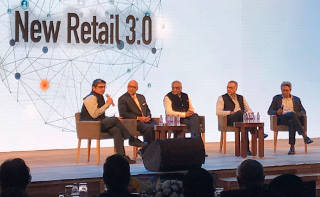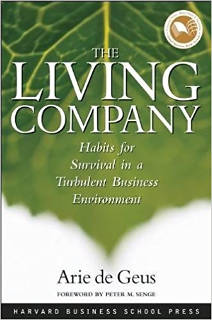I want to talk about change today. For one, change is happening all around us. All the time. Whether we like it or not. To survive the change, the need to constantly recalibrate is primary.
My role as a change agent shows me, the prescient among us recognise the need to change. But only the very resilient see it through. Change is tough. A study by John P. Kotter (Harvard Business Review, 1995) revealed a 70% rate of failure within organisations. Yes, 70% failure. In a 2014 Deloitte study, the reported aggregate success rate from more than 5,000 innovations was less than 5%. Obviously, something is amiss.
The reasons I encounter for the failure are multi-pronged and interconnected. Over the last few months, my work with organisations and individuals has led me to the top three reasons.
1. The potency of status quo: Status quo is powerful, especially if it gives you a sense of success. Imagine a company hitting the numbers for the last six-eight quarters. Or a company with lineage and past success. Weave in a large dose of hubris and a shot of arrogance and you have a train hurtling in the wrong direction.
Great leaders seem to have a knack for getting unsettled by status quo. They dismantle well-oiled pathways and give flight to imagination and create new possibilities, first in the mind. That starts off change.
Last week, Kishore Biyani wove some magic by weaving together data, technology and innate understanding of the Indian consumer, while announcing ‘new retail 3.0’. It took me a moment to take in the audacity of his trillion-dollar plan and absorb the euphoria of the audience.
Indrajit Gupta’s take on the announcement set things in perspective for me. Weaving in the opportunities and limitations of technology, the paradox of choice and the current reality of retail, his article will give you a perspective on the ask that’s needed for us to move to a world of blended commerce. Don’t miss it.
Dreams are exciting; making them happen is where you get out of bed and go to work. Big dreams need comprehensive shifts in action, which need shifts in thinking, that need changes in beliefs. Outsourcing these to ‘proxies’ like consultants and research agencies gets suboptimal outcomes. For changes in belief, thinking and action are as personal as it gets.
2. The Marathon Effect. Understanding William Bridges’ ‘Marathon Effect’ is important for every leader who has ‘change’ as his war cry. The Marathon Effect puts in perspective the ‘lagging effect’ of how people respond to organisational change. My amateur indulgences in running long distance races have put me on the start lines of several marathons. When there are many thousands of people running a long-distance race, the first to start off are the fast ones. The metaphorical equivalent of leaders and high potential managers in an enterprise. My turn to start the race often comes several minutes after the race has officially started. Until then, I along with several others are shuffling our feet and trying hard to keep the focus.
That is the case for leaders in an organisation as well. For every leader who starts off a change, there are hordes of employees who are not sure about what it’s all about.
This brings us to the next role of the leader: to sell the change and live the change. For a large enterprise to start believing in the change and buying into the rationale, there needs to be a solid proposition. And several ‘salesmen’ and ‘saleswomen’ championing the change.
The two anecdotes from Subroto Bagchi's book Sell is an absorbing read. We all sell. All the time. The anecdotes had me nodding away, thinking of a leader ushering in change. If you consider the Marathon Effect as well, continuously communicating the need to change and catching the small signs are key aspects of a leader’s role.
The trouble with change is that it often comes in micro instalments. To be able to recognise it and to give it space to thrive is an important ask for leaders.
3. Change is boring: Unlike the daredevilry of the announcement of change, the last unit of change is tough and personal. The individual unit of change needs to break the gravitational pull of habit and the humdrum of everyday discomfort.
Charles Assisi’s article this week plays that out perfectly. He explains that his prowess in getting up and running a 10K is not as worthwhile as the mention seems to indicate. The ‘how’ matters, he says. He then takes us on an interesting ride quoting Ed Latimore, distinguishing between ‘good pain’ and ‘bad pain’. The next time I am spot the drool worthy gulab jamun, I am going to remember Charles!
Leaders driving change would love their organisations to understand the concept. The good pain of having to go through changing themselves is easier to bear. Imagine the potential bad pain of being obliterated in the marketplace.
At Founding Fuel, we are often in the midst of organisations in this space, desirous of change and yet tearing their hair in making it happen. We help them stay the course. Do stay the course with us by subscribing to the newsletter and spreading the word.
One last thing. This week, may I suggest that you be brave enough to stretch your horizon and change something. Something that you have long wanted to. Perhaps it’s raising your voice. Or it is saying no. Or yes. Somewhere inside all of us is the power to change the world, said Roald Dahl. Let me invite you to begin by changing ourselves, one step at a time.
Decoding the new rules of blended commerce

A new era of shopping is taking shape in India, as retailers—like Kishore Biyani with his Retail 3.0 strategy—look to blur the lines between their physical stores and online shopping. Indrajit Gupta offers a glimpse into how this will change the way modern retailers operate. (Read Time: 4 mins)
A salesperson’s talismans: Resilience, persistence and pride in the product

Through these two anecdotes from his book ‘Sell: The Art, the Science, the Witchcraft’ Subroto Bagchi illustrates how the best in the business overcome mistrust and find new doors if one is closed. (Read Time: 6 mins)
The 1% rule

[By Erwin Bosman, under Creative Commons]
How do you eat an elephant? One piece at a time. Sounds like plain common sense. If forgotten, failure is inevitable, says Charles Assisi. (Read Time: 5 mins)
What We Are Reading
The Living Company

The book that’s been on my mind this week is The Living Company by Arie de Geus. It’s a fascinating read that will implore you to approach change not in a mechanistic ‘process only’ mode. The very approach of treating an organisation as a living being will make a giant difference to your change effort. Try.
From Our Archives
May the fastest sperm win

16 kms/hour. That is the minimum speed entrepreneurs and CEOs ought to be able to run at to stay on top, says Rajat Chauhan. (Read Time: 3 mins)



